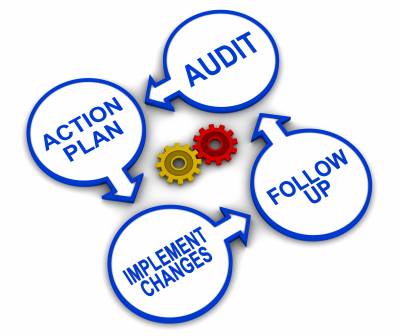
This is a year that shippers have been dreading. Increased demand, from retailers looking to restock after the holidays and from manufacturers, has made it harder for companies to book transportation, particularly on short notice. Prices have also risen due to bad weather, a new U.S. federal trucking safety rule, truck and driver shortages and diesel prices that are around a three-year high. For shippers that play the spot market, double digit rate increases are becoming the norm.
This was the subject of a feature story in a recent issue of the Wall Street Journal (https://www.wsj.com/articles/rising-freight-costs-are-weighing-on-companies-profits-1517521490 ). A number of U.S. companies told investors that rising shipping costs in recent months have cut into earnings. Many manufacturers and retailers throughout North America spend millions of dollars a year on freight transportation.
Freight costs can represent between 1 and 10 percent of a company’s operating revenue, one of the largest cost items. Unfortunately, they are often treated as just a cost of doing business. From time to time a shipper may try out a new mode of transport, a new carrier or conduct a freight bid. Other than that, freight programs tend to remain fairly static from year to year.
During our years of consulting with shippers all over North America, we have observed a pattern of Best Practices that elevate certain shippers and companies above their peers. Employing these Best Practices allow these companies to reduce freight costs and improve profitability. One of the best ways to find out where a company stands in this area of rising freight rates is to conduct a Transportation Audit.
It is our view that shippers with an annual freight budget in excess of $1 million should periodically conduct an independent audit of their freight programs. Just as businesses audit their accounting practices, looking for opportunities for improvement, supply chain leaders should periodically audit their freight transportation processes. You might be amazed at what you find.
Note that a Transportation Audit is far more than a freight rate audit that seeks to identify where a shipper is being overcharged or incorrectly charged by transport companies. A Transportation Audit takes a holistic look at a company’s entire freight management program. The following items are typically included in one of these exercises.
Freight Data Management – Does the company have the quality and quantity of the data necessary to effectively manage freight transportation?
Knowledge – Does the shipper possess an understanding of the various disciplines (e.g. pricing, modes, carriers, customs, laws etc.) associated with freight transportation?
Organization – Is there a freight transportation leader within the organization, does the leader possess the appropriate skill sets to drive efficiencies in freight transportation, where does managing freight transportation fit within the company and how efficiently and effectively is it led and managed?
Freight Spend Management – Is there a detailed freight transportation budget, are variances between actuals and budget tracked, and are exception reports produced and acted upon?
Process – Does the company employ Best in Class processes to drive its freight transportation operations? What are the links between inbound and outbound freight? Does the company have Best in Class processes to procure carriers and rates?
Technology – Is Technology used to optimize the efficiency of key facets of transportation? Is it used for planning, execution, and management?
Strategy – Is the company’s Supply Chain and Transportation Strategy properly aligned with the company’s Business Strategy? Is the business’ transportation strategy aligned effectively with the company’s eCommerce strategy?
Key Performance Indicators and Reports – Does the company have relevant KPIs to manage freight transportation and does it have Dashboards and Scorecards that provide alerts and drive performance? Does someone monitor the KPIs and act when there are negative variances?
Carrier-Friendliness – In this era of tight capacity, does the company have strong relationships and collaborative business practices with its core carriers?
Network Optimization – Is the company using the optimum mix of for-hire, dedicated and private fleet services? Does it consolidate shipments and use the lowest cost modes, when feasible?
Operational Excellence – Are the basic “blocking and tackling” aspects of freight management (e.g. packaging, loading, unloading, private fleet operation) performed at a high level? Does the company’s supply chain provide competitive differentiation in the market?
Summary
Keep in mind that even a few percentage points of savings off a multi million freight spend can be a considerable amount of money. A Transportation Audit can put some much needed dollars back on your company’s bottom line.
If you need help in conducting a Transportation Audit, please contact us at info@dantranscon.com. To stay up to date on Best Practices in Freight Management, follow me on Twitter @DanGoodwill, join the Freight Management Best Practices group on LinkedIn and subscribe to Dan’s Transportation Newspaper (http://paper.li/DanGoodwill/1342211466).



















